As a professional writer, I place a lot of value on the written word. That being said, one can write the most perfectly put-together piece, and it wouldn’t land half as well without beautifully designed visual elements.
Think about it this way – when you see a gigantic block of text, most of the time you scroll right past, right?
But include a couple of custom illustrations, a gif or two, or maybe even an infographic or video to break up all that text, and the whole game changes.
This transformation underscores the critical role of content design in today’s digital landscape. Modern audiences are visually oriented, craving a blend of text and imagery that’s not only informative but also shareable and engaging. When content strategists and content designers collaborate effectively, the result is a content marketing strategy that’s the digital equivalent of a perfect pairing — think of it as the avocado toast of the marketing world.
It’s a synergy that elevates brand awareness, enriches user experience and turns potential customers into loyal advocates.
Why Design Matters in Social Media
In the realm of social media, design is a key component of your content marketing efforts. It’s not just about aesthetics; it’s about crafting a visual language that resonates with your audience. This visual language — comprising color schemes, fonts and imagery — serves as the backbone of your brand identity.
When executed well, it makes your brand instantly recognizable across all platforms, from Facebook to Instagram to LinkedIn.

What is The Role of Design in Brand Identity?
Design is the unsung hero that works behind the scenes to elevate your brand awareness. It’s more than just eye candy; it’s a strategic tool for communicating your brand’s values, mission and personality.
The visual elements you choose become the shorthand for what your brand stands for, making it easier for potential customers to identify with you.
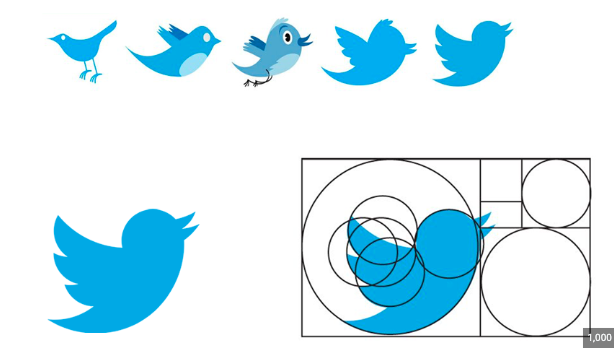
The Golden Ratio in Design
The Golden Ratio is a principle deeply rooted in human perception of beauty and balance. Applying it to your social media designs can make your posts more visually appealing, engaging and shareable.
It’s like the secret sauce that makes your content not just good but great.

Visual Storytelling and Its Impact
In today’s fast-paced digital marketing landscape, visual storytelling is not just a buzzword; it’s a necessity. A compelling image or video can convey complex messages in a fraction of the time it takes to read a paragraph.
This efficiency is gold in the world of social media, where attention spans are short but the potential for engagement is high. Visual storytelling becomes an integral part of your content marketing strategy, turning viewers into engaged users and, eventually, loyal customers.
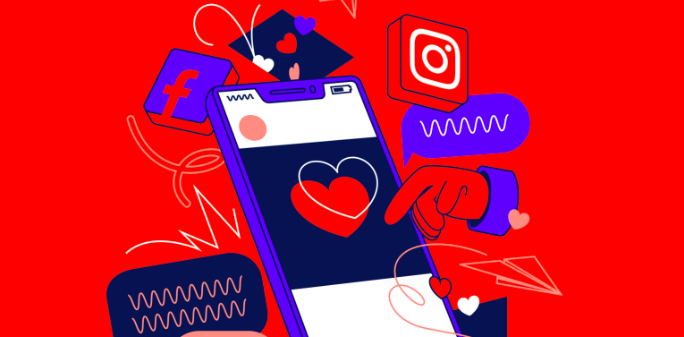
Design Considerations for Social Media
Designing for social media is a nuanced game. It’s not just about what looks good; it’s about what clicks with your audience — literally and figuratively. From the dimensions of your images to the psychology of color, every design element should be chosen with care.
The goal? To create social media posts that are not just scroll-stoppers but also conversation starters.
Making Your Design Accessible
Accessibility is a commitment to ensuring that your content is inclusive and available to everyone, regardless of their physical abilities. From the colors and fonts you choose to the contrast levels in your design, each element plays a crucial role in making your content both beautiful and functional for all users. Now, let’s take a closer look at the main factors you should consider when designing your content with this goal in mind:
1. Choosing the Right Colors
When it comes to design, color is more than just a visual treat; it’s a functional element that can either enhance or hinder accessibility. The hues you pick should be distinguishable to all users, including those with color vision deficiencies.
This isn’t just good design; it’s responsible design.
2. Typography Best Practices
Typography is another design element that goes beyond mere aesthetics. The fonts you select can significantly impact readability and the overall user experience.
Choose fonts that are legible across a variety of devices and screen sizes to ensure your message is accessible to everyone.
3. Ensuring Proper Contrast for Readability
Contrast is the silent operator that can make or break your design. A well-contrasted text will stand out against its background, making it easier for everyone to read, including those with visual impairments.
It’s a small detail with a big impact on how effectively your content communicates its message.
For more insights on design best practices, check out Brafton’s Graphic Design Rules.
Subscribe to
The Content Marketer
Get weekly insights, advice and opinions about all things digital marketing.
Thank you for subscribing to The Content Marketer!
Best Visual Formats for Marketing
Content marketing is about creating a diverse range of content types that resonate with your audience. From infographics and eBooks to social media posts and videos, each format has its unique strengths in capturing attention and driving engagement.
Let’s dive into the most effective visual formats that can elevate your marketing strategy.
1. Infographics and Their Effectiveness
Infographics are the Swiss Army knife of content marketing. They can distill complex information into an easily digestible, visually appealing format. This makes them a powerful tool for engagement and information dissemination.
Whether you’re explaining a complicated process or showcasing industry statistics, infographics can make your content more shareable and valuable, enhancing your content marketing efforts.
2. eBooks as a Marketing Tool
eBooks are the long-form content that your audience didn’t know they needed. Offering in-depth insights on a particular subject, eBooks can serve as a valuable resource for your audience, establishing your brand as an industry leader.
eBooks can also be viewed as a full content marketing strategy, helping generate leads and build brand awareness.
3. Social Posts and Visual Engagement
Social media platforms are the playgrounds for content marketers, and visuals are the toys. Eye-catching images, compelling videos and even interactive polls can skyrocket your engagement rates. The right visual content can turn a mundane post into a shareable piece of content that resonates with potential customers.
Remember: It’s not just about posting; it’s about posting content that people want to engage with.
4. Videos and Memes in Modern Marketing
Welcome to the age of dwindling attention spans, where videos and memes reign supreme. These formats offer quick, entertaining and often educational ways to get your message across.
From how-to videos to hilarious memes that align with your brand, this type of content can go viral, giving your marketing strategy an unexpected but welcome boost.
Check out these captivating visual formats by Brafton.
Why is Brand Awareness and Identity So Important?
In digital marketing, brand awareness and identity are the cornerstones that set you apart in a crowded marketplace. But how do you make your brand not just known, but memorable?
The answer lies in the strategic use of visual content. Let’s learn how visuals can amplify your brand’s value, engage your audience, create lasting impressions and even give your SEO a leg up.
- Visual content enhances brand value: Visuals are more than just eye candy; they’re the backbone of your brand identity. They convey what words can’t, acting as silent ambassadors that make your brand resonate with your target audience.
- Raising engagement: In the social media landscape, visuals are king. From infographics to videos, they drive likes, shares, and comments, turning passive viewers into active participants.
- Creating lasting impressions: First impressions are often visual. The moment someone lands on your blog post or social media, your visuals are at work, shaping your brand’s image for better or worse.
- Improving search engine positioning (SEPs): Visuals aren’t just for show; they’re SEO gold. Well-optimized images and videos can boost your search engine rankings, increasing visibility and conversions
Essentially, visual content works behind the scenes, enhancing your brand value, engaging your audience and even boosting your SEO. So, the next time you’re crafting your marketing strategy, don’t underestimate the power of good visual content.
When I envision our Brafton designers, it goes a little somethin’ like this:

What Does It Look Like When Content Marketing And Design Align?
It can be difficult to capture in words what successful visual marketing looks like. So, let’s take a look at some examples and key takeaways:
Universal’s Straight Outta Somewhere Campaign
Here’s one you’re probably familiar with. Ahead of the release of the NWA biopic Straight Outta Compton, Universal Pictures teamed up with Dr. Dre’s Beats brand to create this masterpiece in content creation. The campaign leveraged the now-nearly-instantly recognizable title artwork and encouraged fans to personalize it in a meme format. “Straight Outta Somewhere” images began popping up all over social media platforms and beyond, including even Sesame Street-themed versions.
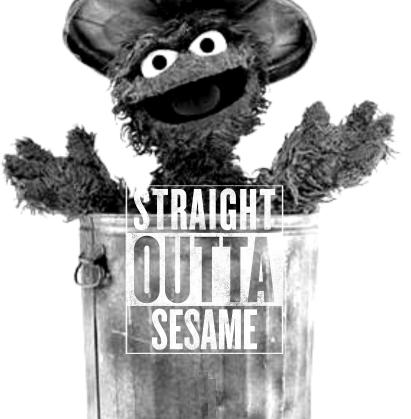
According to the Content Marketing Institute, more than 9 million memes were created during the campaign by individual users and well-known organizations alike – including the White House.
This example not only demonstrates how marketing and design can team up to spread awareness and publicity, but it also shows the power of personalization and interactive content. This meme-creating campaign was successful because it allowed users to engage and interact, and create something of their own. And thanks to the shareability of this kind of content, the campaign was an absolute smash.
Office Depot’s Elf Yourself Campaign
People love to personalize – there’s just no arguing it. Another example to drive this point home comes from Office Depot and its Elf Yourself campaign. Chances are good that you recognize this one as well – during the campaign’s heyday, animated elf videos were being passed around faster than a basket of never-ending breadsticks at Olive Garden.
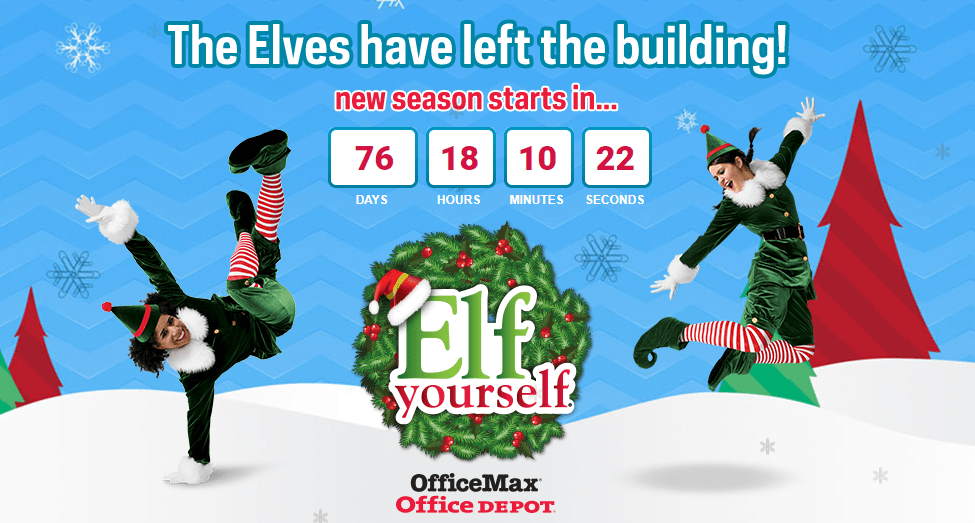
As Search Engine Journal contributor Jessica Davis pointed out, holiday elves have basically nothing to do with the office supply store’s brand, but the campaign’s fun and interactive approach really appealed to consumers.
Make-a-Wish Foundation’s Batkid
Marketing and web design working in tandem doesn’t always have to be silly or off-beat, however. Some of the biggest impacts come when content and design elements combine to create something truly meaningful, like the Make-A-Wish Foundation did with Batkid.
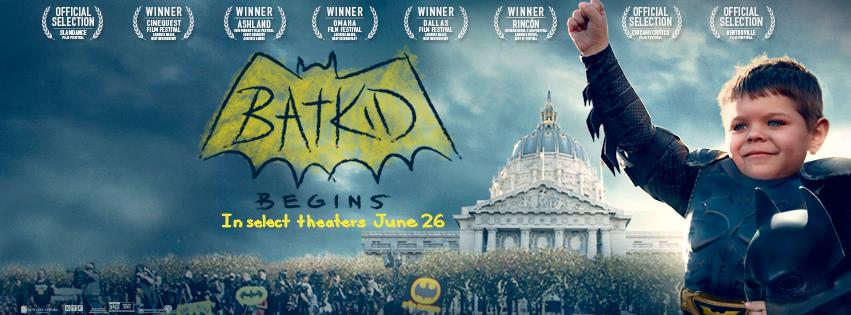
I mean, just look at that image. I instantly want to know more, and I’m sure I’m not alone here.
The campaign’s aim was to bring awareness to the work of the Foundation, and centered around one young boy, Miles, who was fighting leukemia. Miles’ wish was to become Batman, and the Make-A-Wish Foundation really came through, creating a short documentary film with the help of the city of San Francisco. Not only was this a unique and heartwarming experience for Miles, but the resulting visuals really tugged at the heartstrings and helped spread awareness about the foundation’s cause.
This example shows what can happen when you put multiple content marketing channels and design teams to work for you – the Foundation drew upon a video trailer, a professional movie-style poster image (above), a spectacular short film, and other visual content shared across its website design and social media marketing.
Ahead of filming, the Foundation put out a call for about 200 extras and volunteers to help create a real-life Gotham City in San Francisco just for Miles – the request went viral and thousands (over 16,000) answered the call. This kind of omnichannel exposure is invaluable and helped the Foundation create a truly special experience for a child with a life-threatening medical condition.
The campaign was so successful that everyone from actor Ben Affleck to former President Barack Obama shared messages and encouragement for Miles. Even years after the fact, Batkid still sees attention and traction.
Learn more about the campaign and check out Miles’ heroics in the Make-A-Wish Foundation Batkid film here. Cue the happy tears. <3
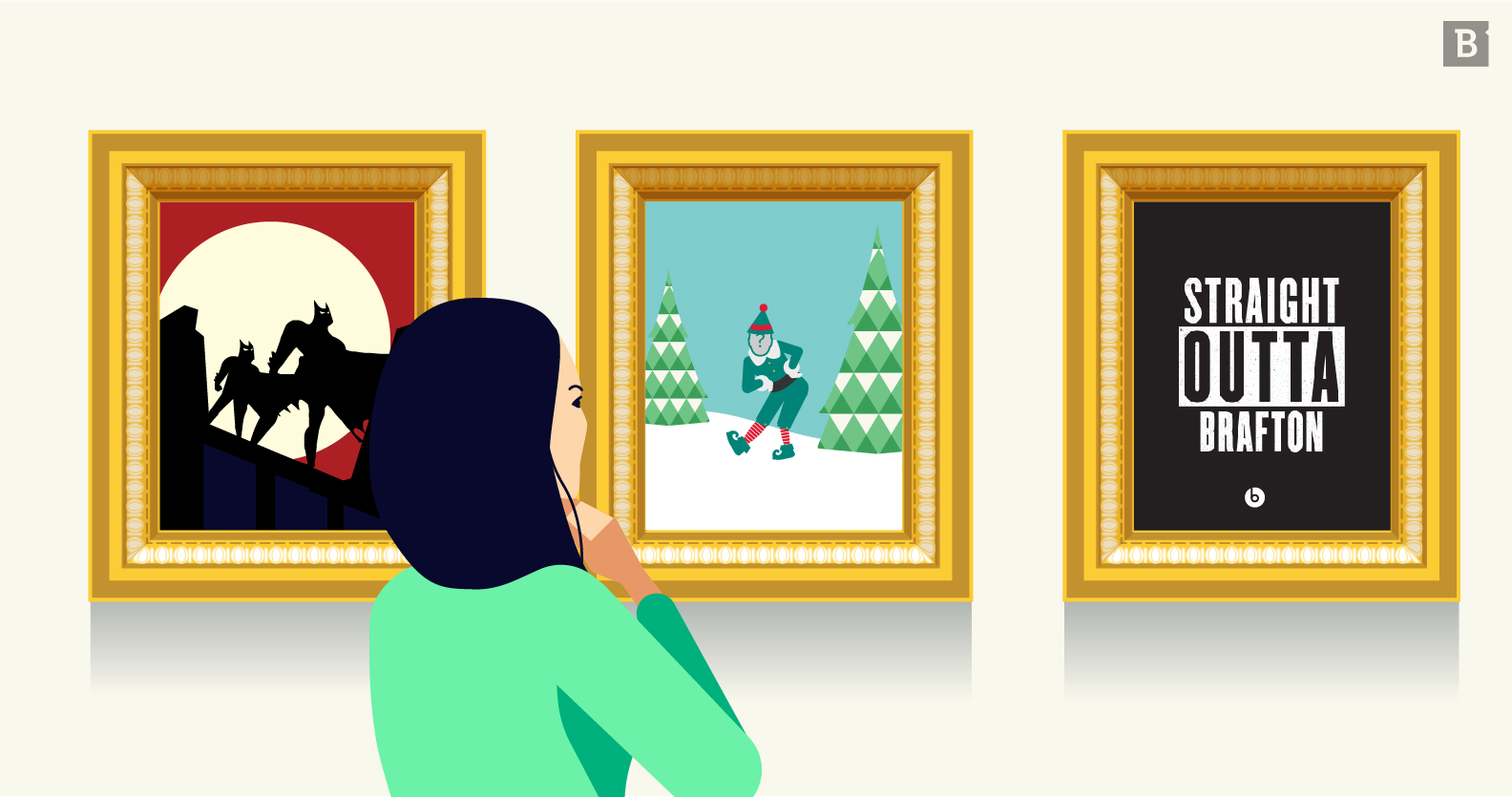
Aligning your Design
Not every campaign has to be as expansive or multifaceted as the Batkid initiative. Even smaller, simple visual elements can help break up written collateral, keep readers’ attention and support content marketing goals.
Remember to keep the interests of your audience in mind, as well as the image of your brand. Visual marketing is something that can really bolster the success of your marketing strategy and create a unique user experience.
To see more examples of the ways design and content marketing can work in tandem, check out our eBook.





